Description
Product Model: 239-RTD-AN
- Product Brand: GE (GE Multilin)
- Product Series: 239 Motor Management Relay
- Product Features:
• Full 3-phase motor protection (thermal, short circuit, ground faults)
• Includes 3 RTD temperature inputs and one isolated analog output
• RS-485 / Modbus communication interface for remote monitoring
• Compact form factor, modular settings, and diagnostic logging
Technical Features & Benefits
The GE 239-RTD-AN relay builds upon the baseline 239 motor protection relay with key enhancements: the ability to monitor three RTDs (resistance temperature detectors) and provide a single analog (isolated) output. These features give maintenance engineers more insight into thermal conditions and allow analog signals to be used for trending or control integration.
Key technical strengths include:
- Comprehensive protection coverage: Overload using thermal modeling (15 selectable curves), instantaneous and delayed overcurrent, ground fault, mechanical jam, undercurrent, unbalance, and breaker failure protection.
- RTD temperature monitoring: Up to three RTD inputs (Pt, Ni, Cu types) allow measurement of stator or bearing temperature. These can feed into alarm or trip logic.
- Analog output: A programmable analog output (e.g. 4–20 mA) enables the relay to report a continuous thermal capacity or temperature reading for trend logging or external control.
- Communication interface: RS-485 serial port supporting Modbus RTU, enabling remote parameter access, status reading, and logic control.
- Diagnostic features: Event logging, trip records, simulation/test mode, memory lockout, thermal capacity tracking, and real-time measurements of current, temperature, and status.
- Flexible configuration & modular design: The relay supports field firmware upgrades, modular options (RTD, analog) per order codes, and a compact shell that can mount in standard starter enclosures.
- 239-RTD-AN
- 239-RTD-AN
From a benefits standpoint:
- Predictive insight: RTD inputs allow trending of temperature rise, catching early signs of bearing or winding deterioration.
- Analog output integration: The analog signal can feed PLCs, control loops, or display systems without extra converters.
- Reduced panel complexity: You get protection + temperature monitoring + analog output in one device, simplifying wiring and space demands.
- Remote management: Use Modbus to integrate with SCADA or asset management tools.
- Enhanced safety and maintenance: Built-in diagnostics and logging reduce blind spots and help root cause analysis after events.
Applications & Industry Context
The GE 239-RTD-AN is typically deployed in industrial motor protection scenarios where both electrical and thermal monitoring are essential. It finds usage in:
- Pumps, fans, compressors: Many motor-driven plants require RTD feedback (e.g. to protect bearings or stator).
- Cement, mining, aggregates: Harsh environments where temperature-based alarm or trip is valuable.
- Petrochemical, chemical plants: Processes where heat buildup can lead to insulation failure if not tracked.
- Water & wastewater: For pumps and blowers where preventive maintenance is critical.
- General industrial automation lines: Anywhere reliability of motors matters.
Because it’s a legacy product (later GE phase-out), many installations now use it in retrofit or replacement scenarios. The 239-RTD-AN is part of the GE motor management relay line, now often superseded by newer Multilin relays.
Installation & Commissioning Insights
From field experience:
- Mounting & panel cutout: The relay fits standard starter cutouts. Use supplied mounting hardware and ensure good panel sealing if in dusty or harsh environments.
- Wiring RTD inputs: Use 3-wire RTD wiring when possible to compensate lead resistance, especially for remote temperature sensors. The 239-RTD-AN supports lead resistance compensation.
- Analog output wiring: Ensure the analog output is isolated and taken to appropriate input on PLC or data acquisition system. Grounding and shielding matter for signal integrity.
- CT & VT selection: Use proper current transformers (CTs) and ensure CT ratios match relay settings. Wrong CT scaling will mis-calibrate everything.
- Setpoint configuration: Use the front panel or 239PC software (via Modbus) to configure protection thresholds, thermal models, RTD alarm/trip limits, communication parameters, etc.
- Testing: Use secondary injection test sets to verify current input, trip curves, ground fault behavior, analog output accuracy, and RTD inputs. Simulation mode is helpful for testing without actual trip.
- Firmware & software: Ensure the relay firmware version is compatible with your 239PC tool version. Backup and document settings.
Maintenance is relatively light:
- Periodic functional test of protection paths
- Verification of RTD sensors and calibration
- Check and clean terminals and connectors
- Monitor analog output accuracy over time
- Backup configuration to prevent loss after power events
Technical Specifications
Below is a summary table based on known information:
| Specification | Detail |
|---|---|
| Product Model | GE 239-RTD-AN |
| Brand / Series | GE Multilin 239 Motor Protection Relay |
| Protection Functions | Overload (thermal), short circuit, ground fault, locked rotor, phase unbalance, undercurrent, breaker failure, mechanical jam |
| RTD Capability | 3 RTD inputs (Pt, Ni, Cu types) |
| Analog Output | 1 isolated analog output (e.g. 4–20 mA) |
| Communication Interface | RS-485, Modbus RTU |
| Display / UI | 40-character backlit LCD + LEDs, keypad front panel |
| Power Supply | AC/DC versions (e.g. 70–265 VAC / 90–300 VDC) |
| Compact size | Mountable in starters and control panels |
| Diagnostics | Trip records, event logs, simulation mode, memory lockout, thermal capacity tracking |
| Firmware Upgrades | Field upgrade via software tools |
| Environment | Suitable for industrial installations, optional conformal coating for harsh environments |

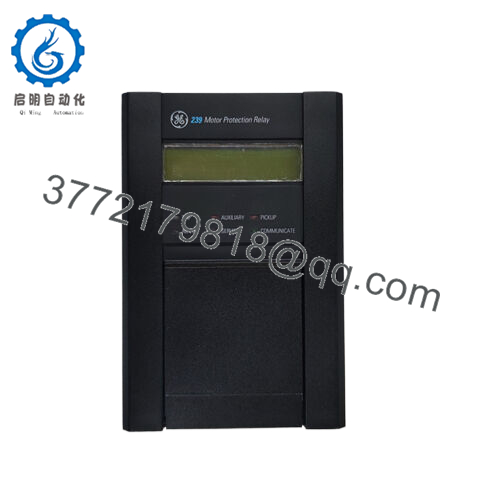
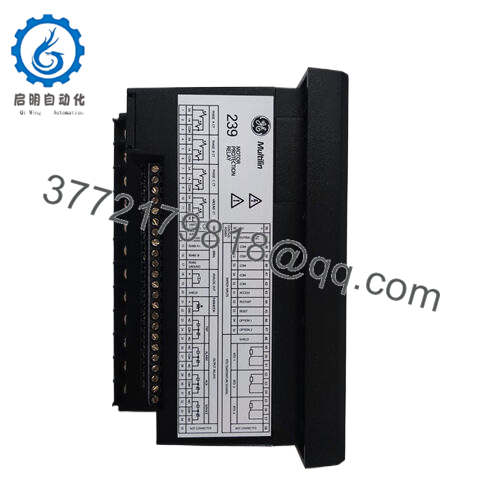
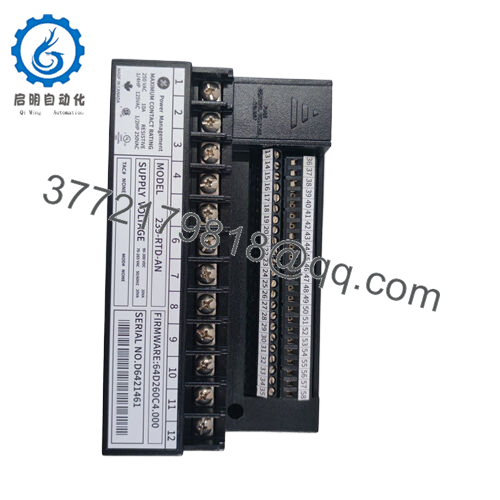
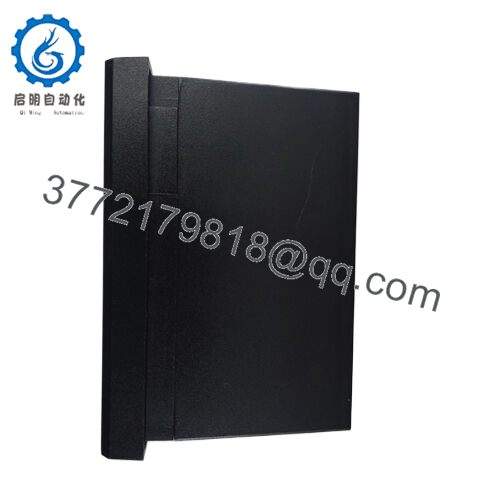
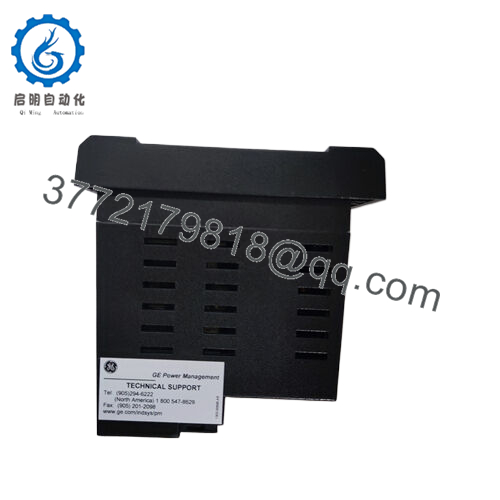
 WhatsApp: +86 16626708626
WhatsApp: +86 16626708626 Email:
Email:  Phone: +86 16626708626
Phone: +86 16626708626


